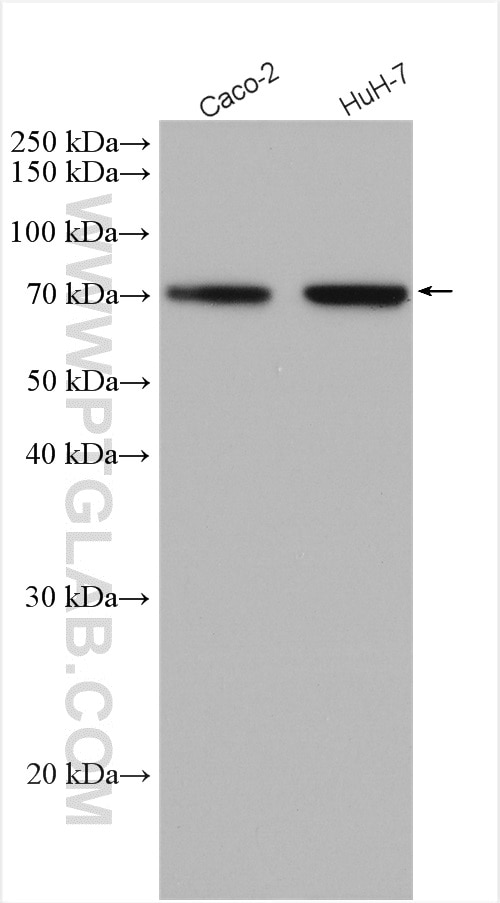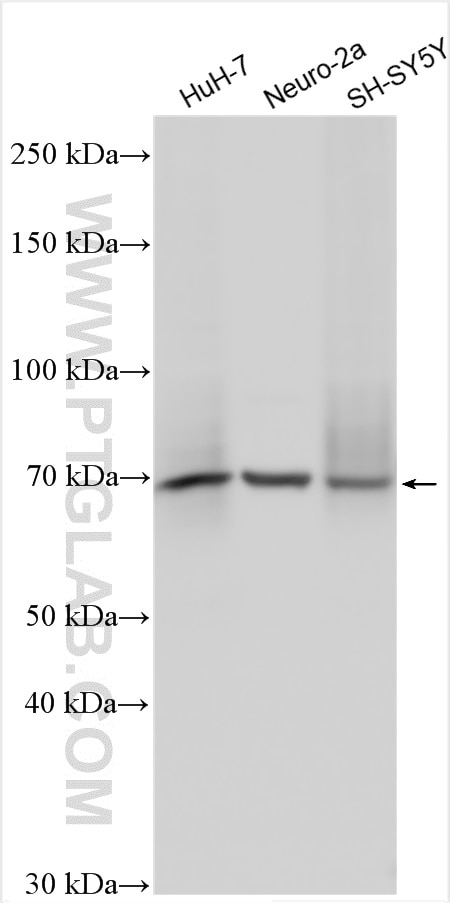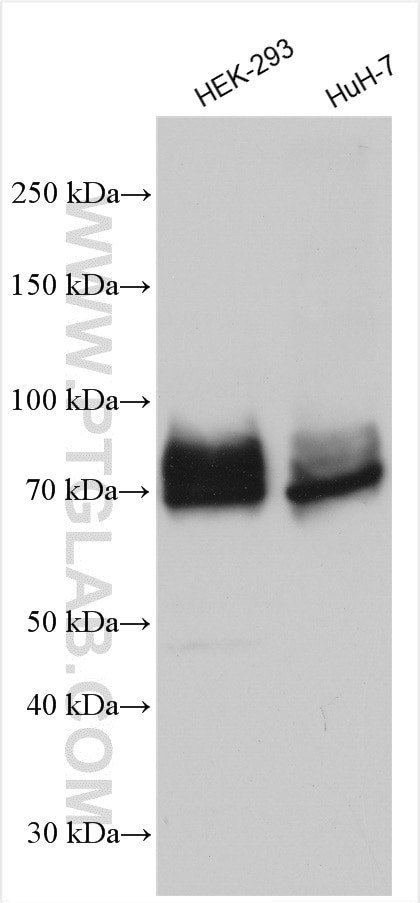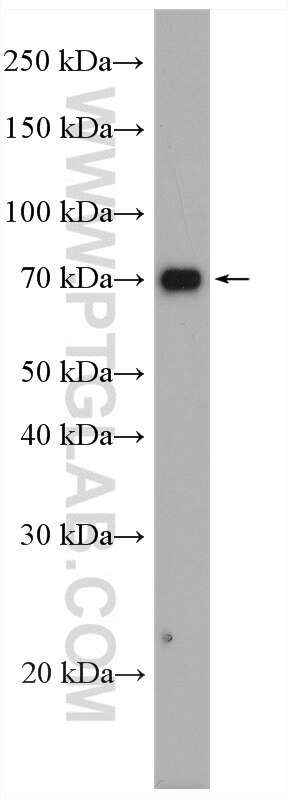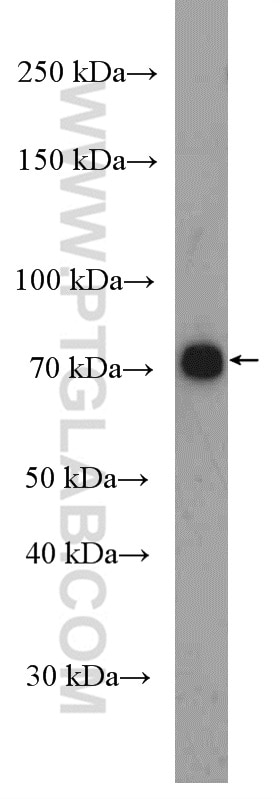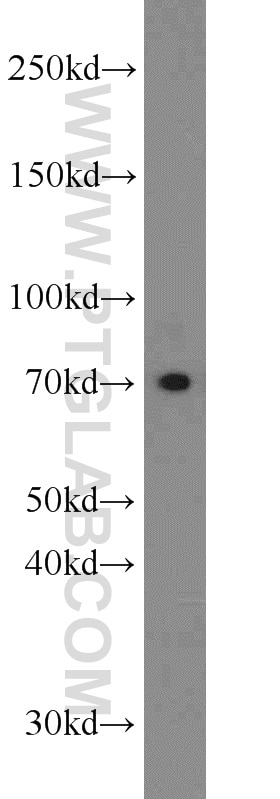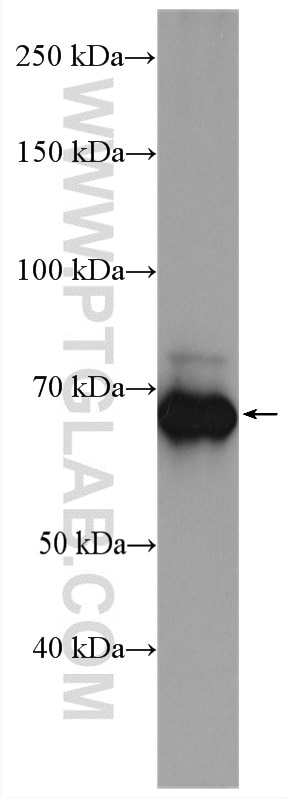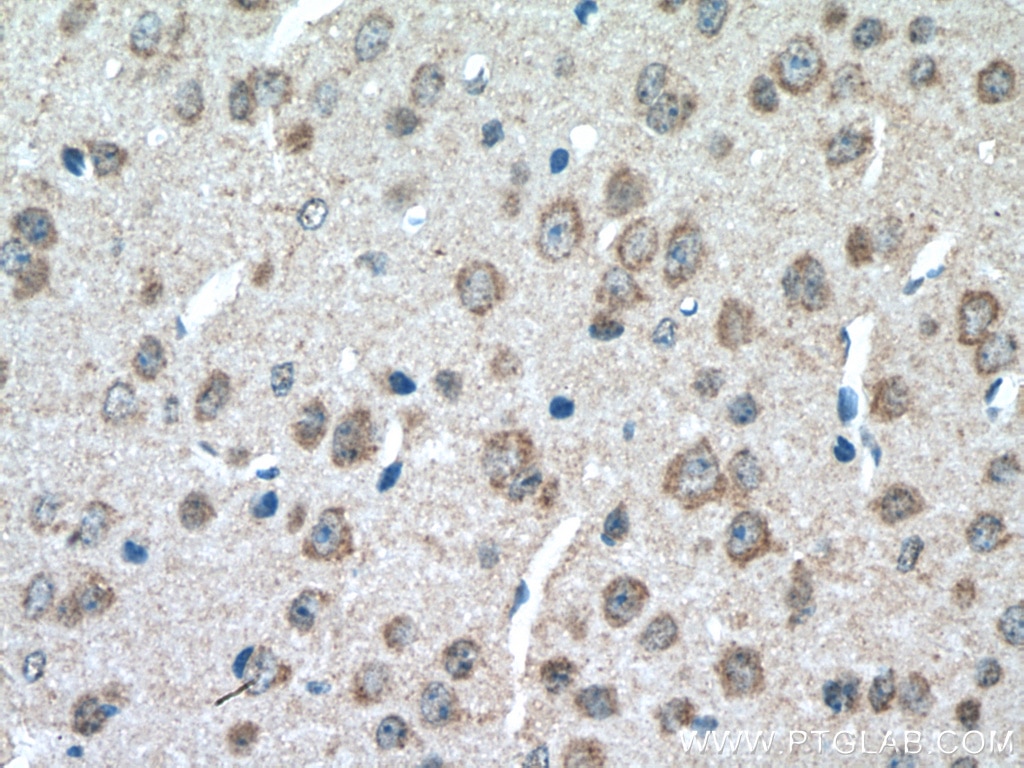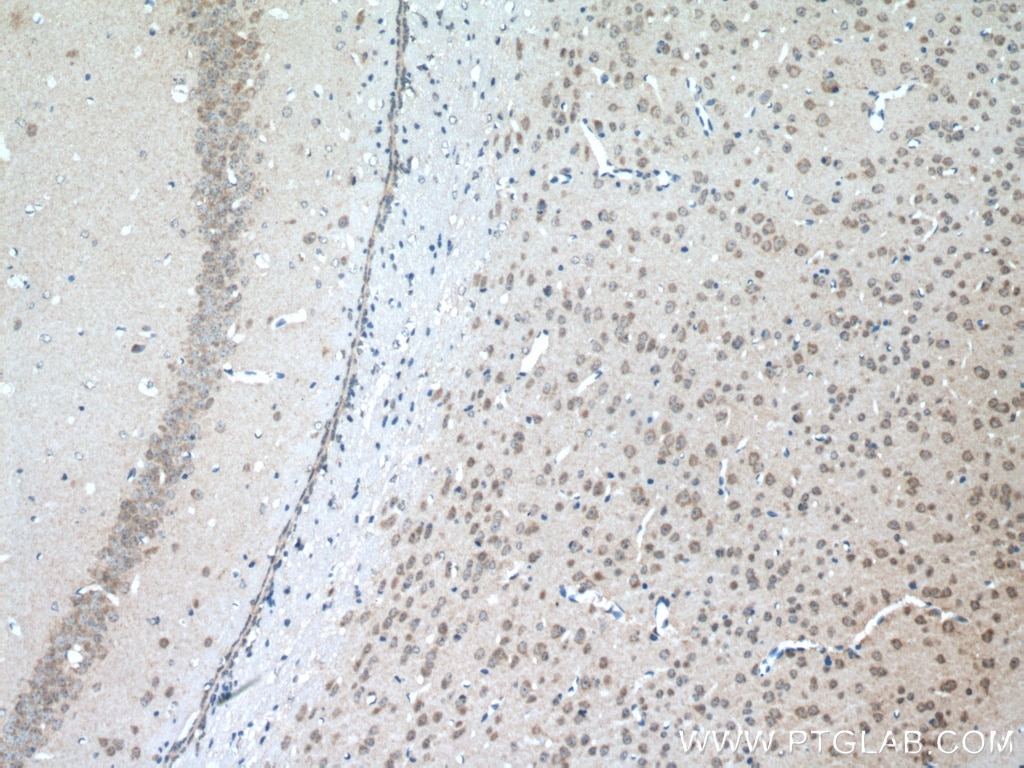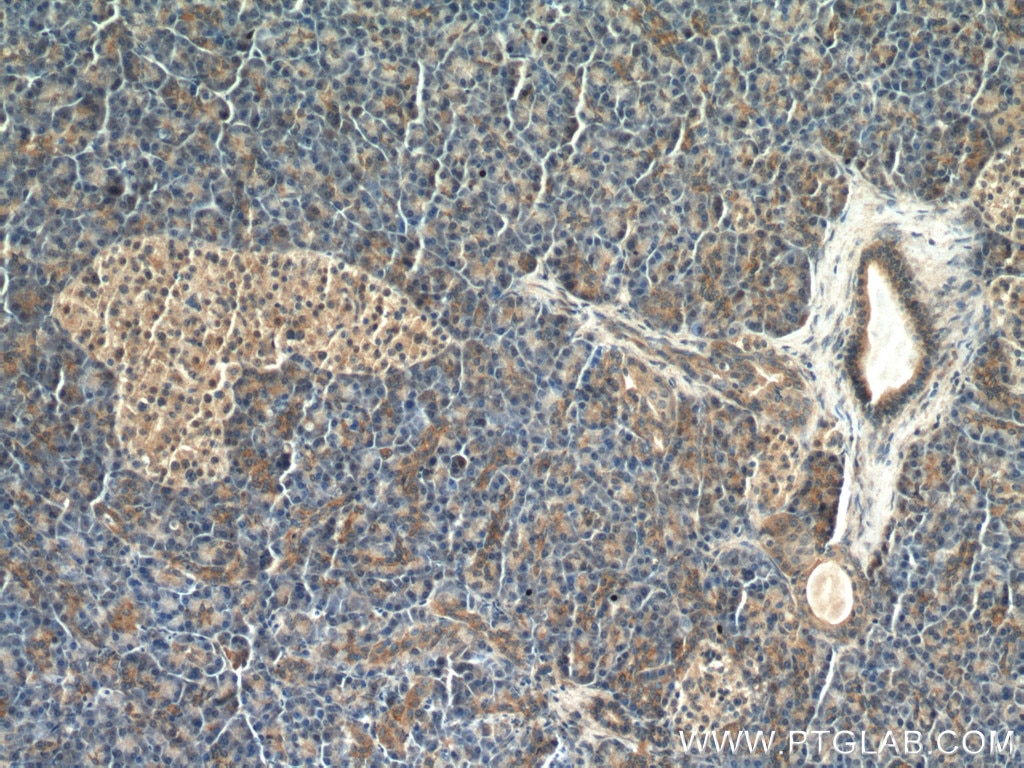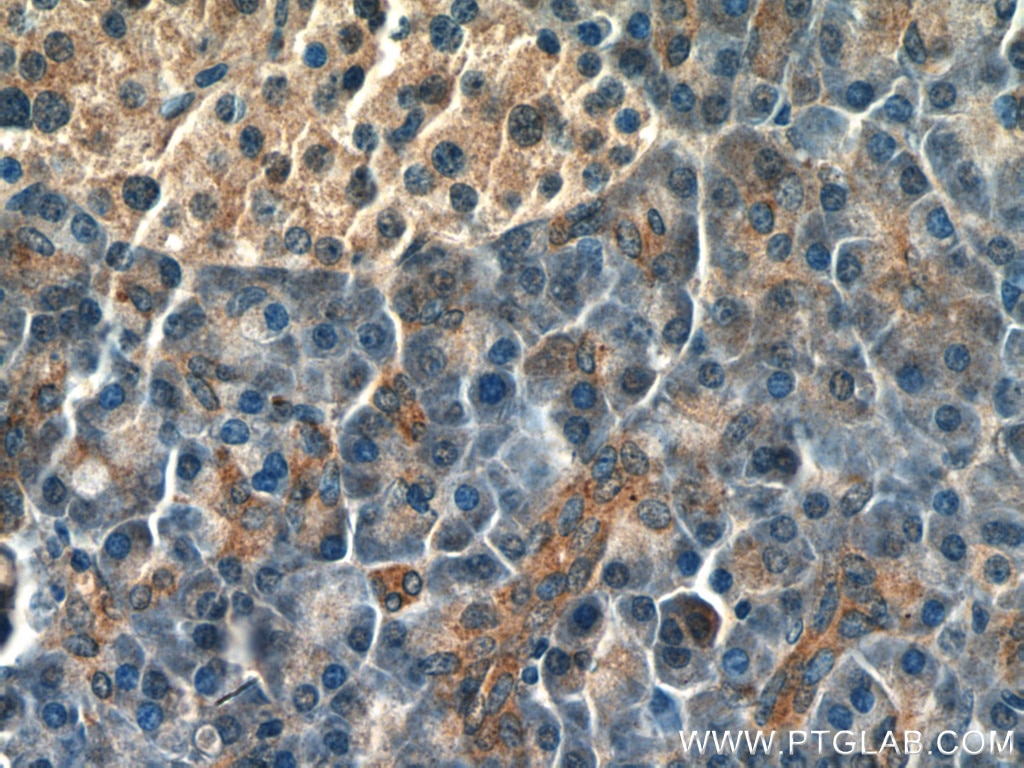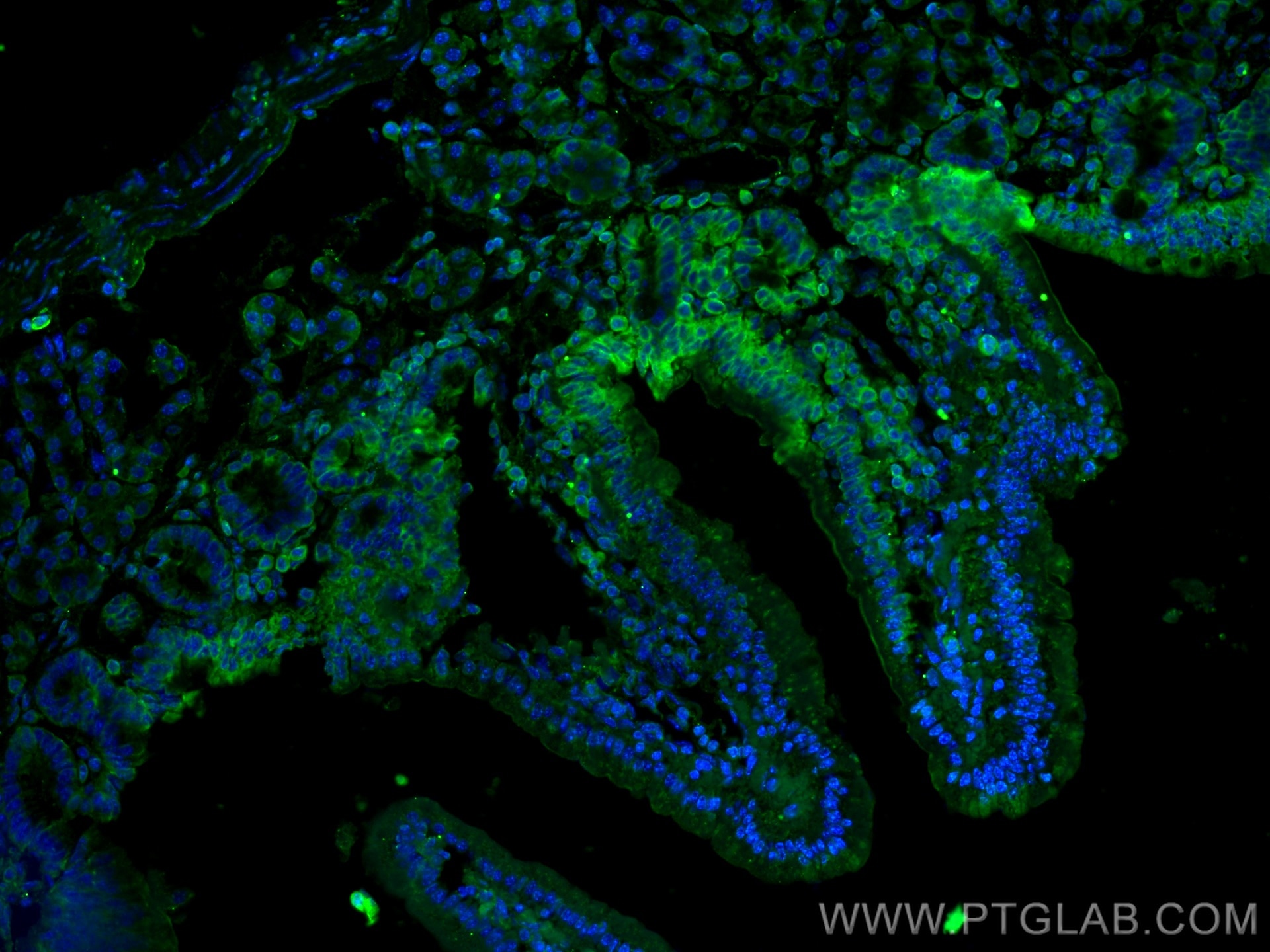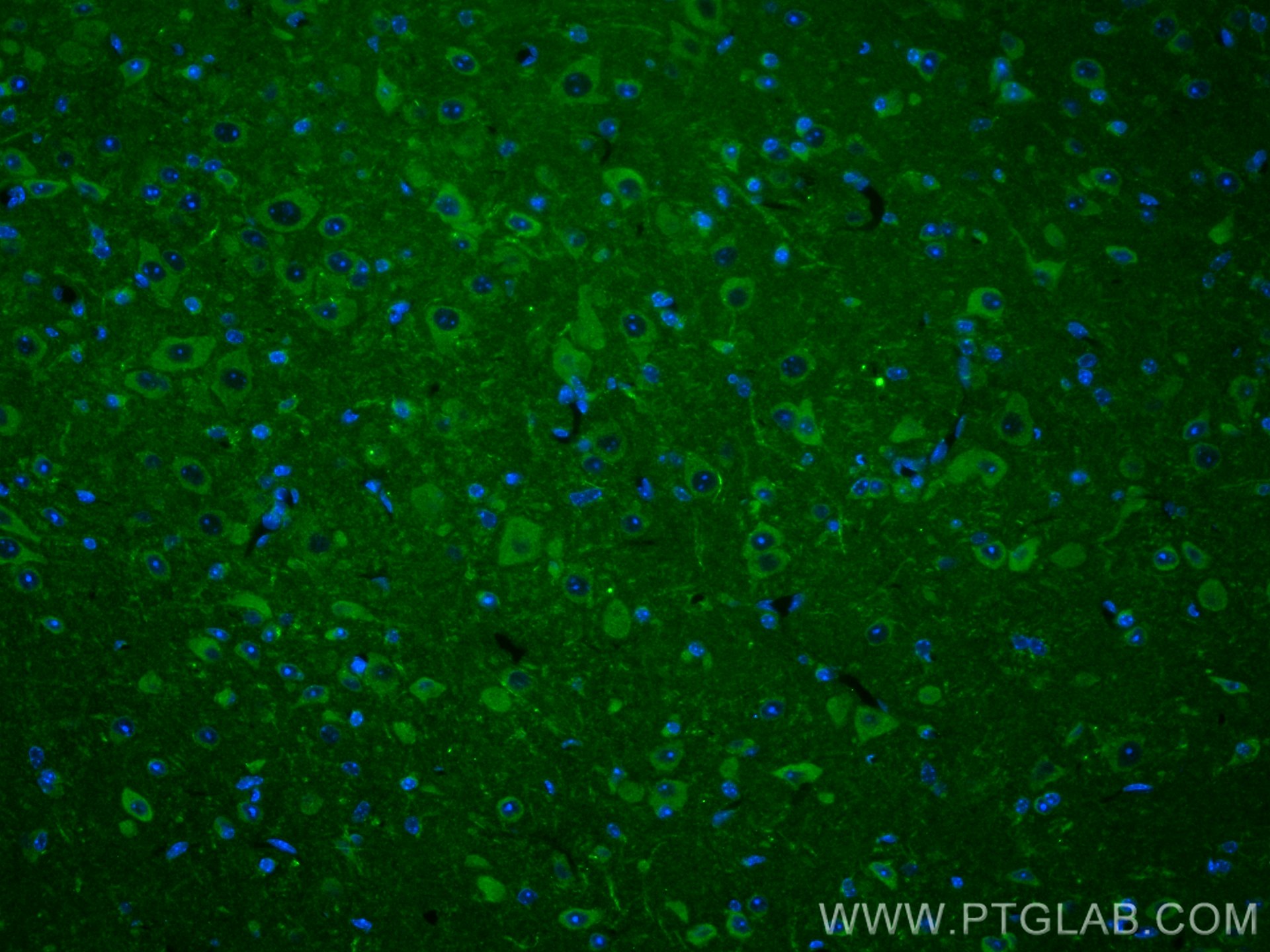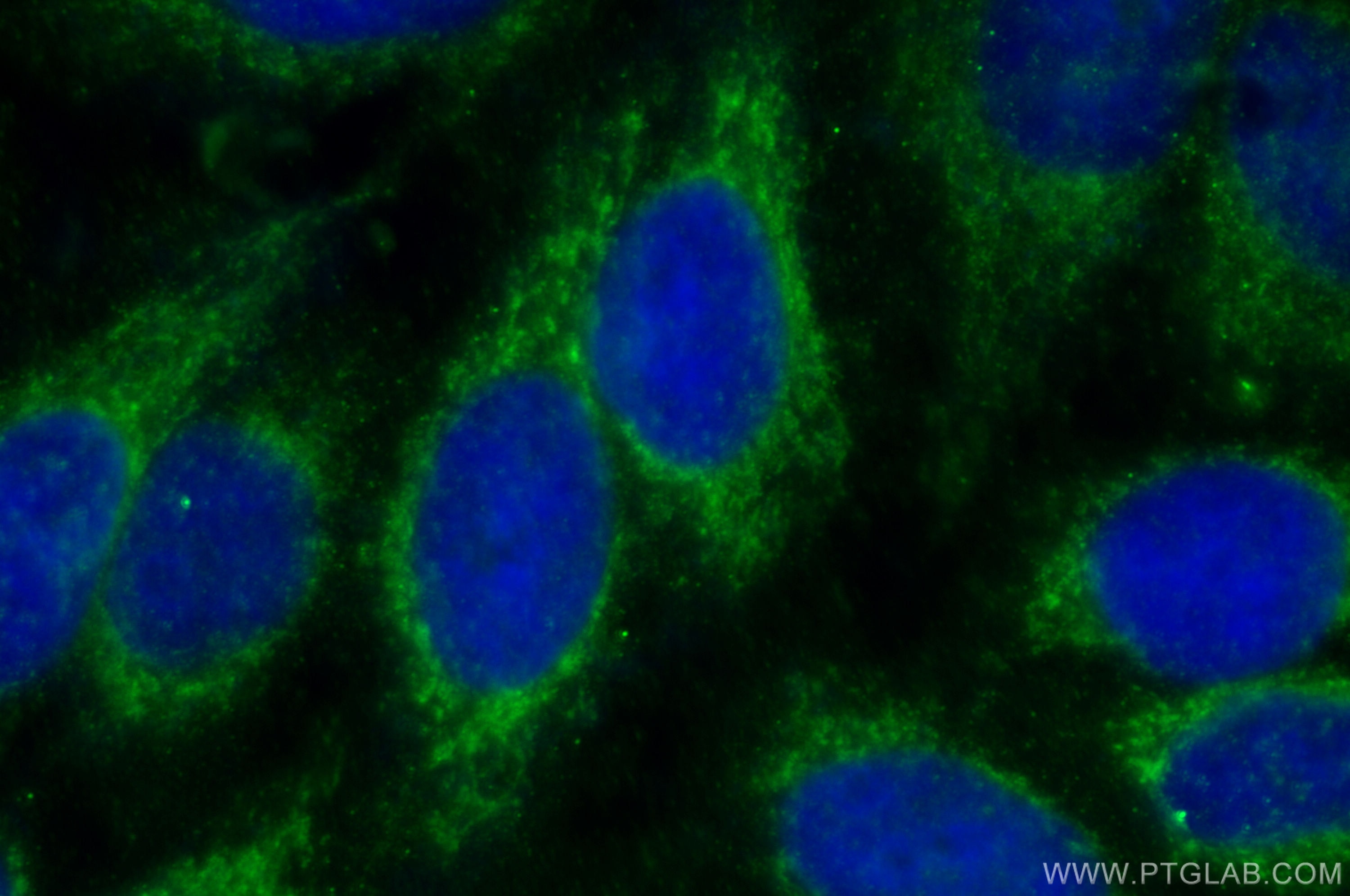Tested Applications
| Positive WB detected in | HuH-7 cells, COLO 320 cells, Caco-2 cells, rat kidney tissue, SH-SY5Y cells, Neuro-2a cells |
| Positive IHC detected in | mouse brain tissue, human pancreas tissue Note: suggested antigen retrieval with TE buffer pH 9.0; (*) Alternatively, antigen retrieval may be performed with citrate buffer pH 6.0 |
| Positive IF-P detected in | mouse small intestine tissue, mouse brain tissue |
| Positive IF/ICC detected in | HepG2 cells |
Recommended dilution
| Application | Dilution |
|---|---|
| Western Blot (WB) | WB : 1:1000-1:4000 |
| Immunohistochemistry (IHC) | IHC : 1:50-1:500 |
| Immunofluorescence (IF)-P | IF-P : 1:400-1:1600 |
| Immunofluorescence (IF)/ICC | IF/ICC : 1:200-1:800 |
| It is recommended that this reagent should be titrated in each testing system to obtain optimal results. | |
| Sample-dependent, Check data in validation data gallery. | |
Published Applications
| KD/KO | See 5 publications below |
| WB | See 102 publications below |
| IHC | See 7 publications below |
| IF | See 8 publications below |
Product Information
20507-1-AP targets DMT1 in WB, IHC, IF/ICC, IF-P, ELISA applications and shows reactivity with human, mouse, rat samples.
| Tested Reactivity | human, mouse, rat |
| Cited Reactivity | human, mouse, rat, pig, chicken, bovine, sheep |
| Host / Isotype | Rabbit / IgG |
| Class | Polyclonal |
| Type | Antibody |
| Immunogen |
CatNo: Ag14314 Product name: Recombinant human SLC11A2 protein Source: e coli.-derived, PGEX-4T Tag: GST Domain: 1-80 aa of BC002592 Sequence: MVLGPEQKMSDDSVSGDHGESASLGNINPAYSNPSLSQSPGDSEEYFATYFNEKISIPEEEYSCFSFRKLWAFTGPGFLM Predict reactive species |
| Full Name | solute carrier family 11 (proton-coupled divalent metal ion transporters), member 2 |
| Calculated Molecular Weight | 568 aa, 62 kDa |
| Observed Molecular Weight | 60-70 kDa |
| GenBank Accession Number | BC002592 |
| Gene Symbol | DMT1 |
| Gene ID (NCBI) | 4891 |
| RRID | AB_10694284 |
| Conjugate | Unconjugated |
| Form | Liquid |
| Purification Method | Antigen affinity purification |
| UNIPROT ID | P49281 |
| Storage Buffer | PBS with 0.02% sodium azide and 50% glycerol, pH 7.3. |
| Storage Conditions | Store at -20°C. Stable for one year after shipment. Aliquoting is unnecessary for -20oC storage. 20ul sizes contain 0.1% BSA. |
Background Information
SLC11A2 (also known as DMT1, Nramp2, and DCT1) is a member of the divalent cation transporters that play a central role in iron homeostasis. SLC11A2 is widely expressed in many tissues including the brain, kidney, testis, duodenum, and placenta. As a membrane protein, SLC11A2 is localized on the apical membrane of enterocytes as well as in transferrin-cycle endosomes. Four isoforms of SLC11A2 exist due to the alternative splicing. They differ at the NH2 and COOH termini but share a common central domain. A variety of molecular weights of SLC11A2 in western blot analysis, ranging from 50 to 100 kDa, has been reported in different cells and species. The differences in molecular weights may be attributed to the level of glycosylation, proteolysis, or the membrane protein itself. This antibody detected various forms of SLC11A2 of 45-100 kDa.
Protocols
| Product Specific Protocols | |
|---|---|
| IF protocol for DMT1 antibody 20507-1-AP | Download protocol |
| IHC protocol for DMT1 antibody 20507-1-AP | Download protocol |
| WB protocol for DMT1 antibody 20507-1-AP | Download protocol |
| Standard Protocols | |
|---|---|
| Click here to view our Standard Protocols |
Publications
| Species | Application | Title |
|---|---|---|
Blood Defective palmitoylation of transferrin receptor triggers iron overload in Friedreich ataxia fibroblasts. | ||
Acta Neuropathol Seizure-mediated iron accumulation and dysregulated iron metabolism after status epilepticus and in temporal lobe epilepsy. | ||
Mol Cell Maintaining Iron Homeostasis Is the Key Role of Lysosomal Acidity for Cell Proliferation. | ||
J Hazard Mater Investigating the potential risk of cadmium exposure on seizure severity and anxiety-like behaviors through the ferroptosis pathway in epileptic mice: An integrated multi-omics approach | ||
Nat Commun Wipi3 is essential for alternative autophagy and its loss causes neurodegeneration. |

